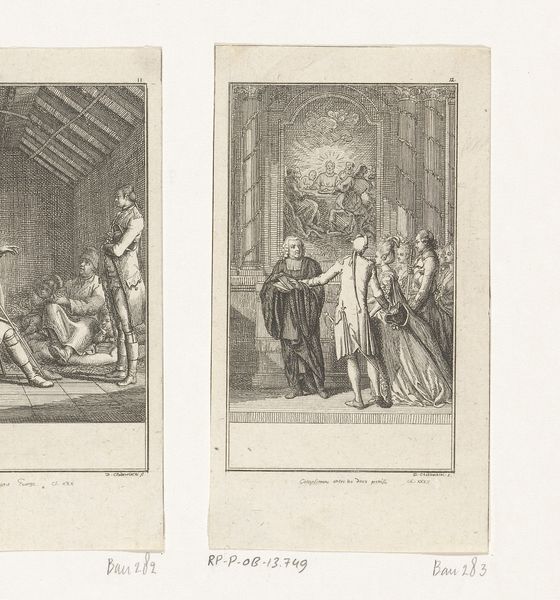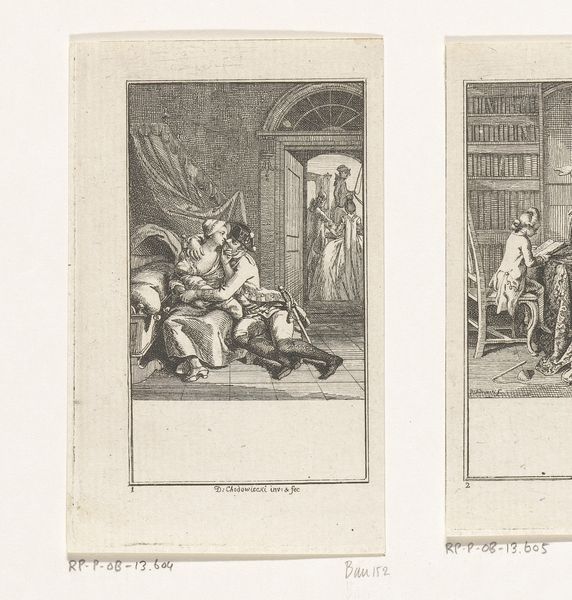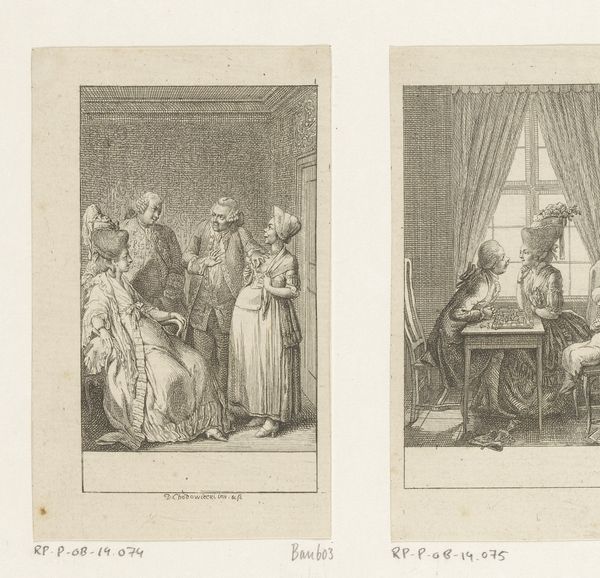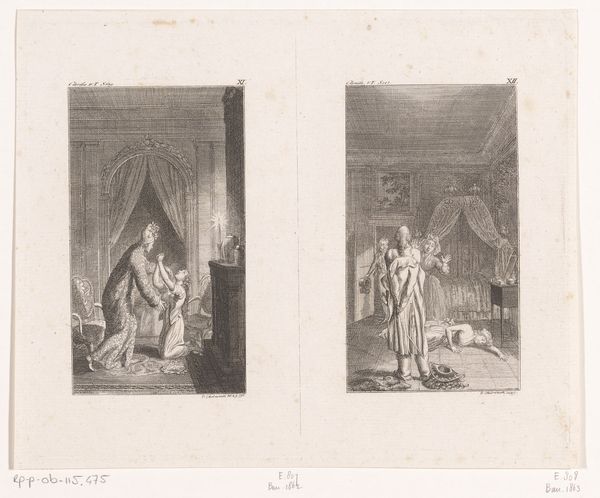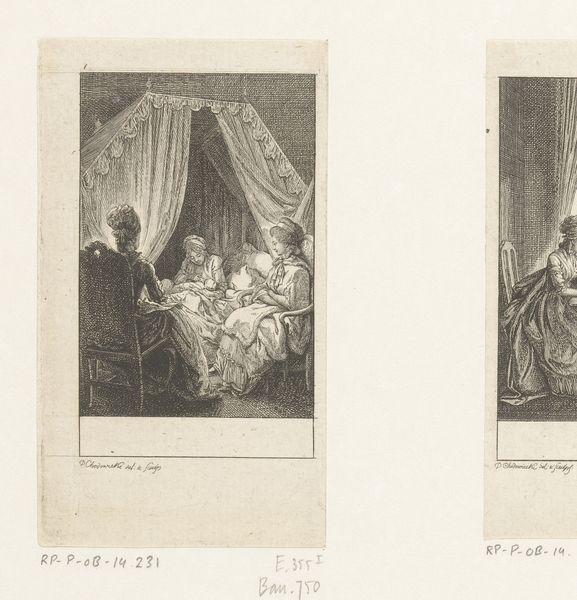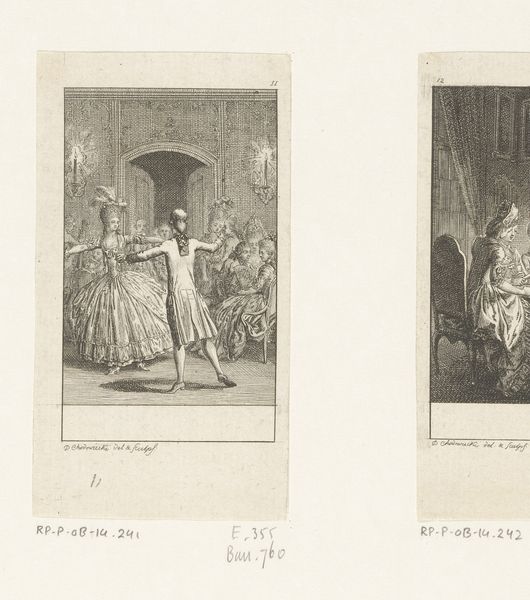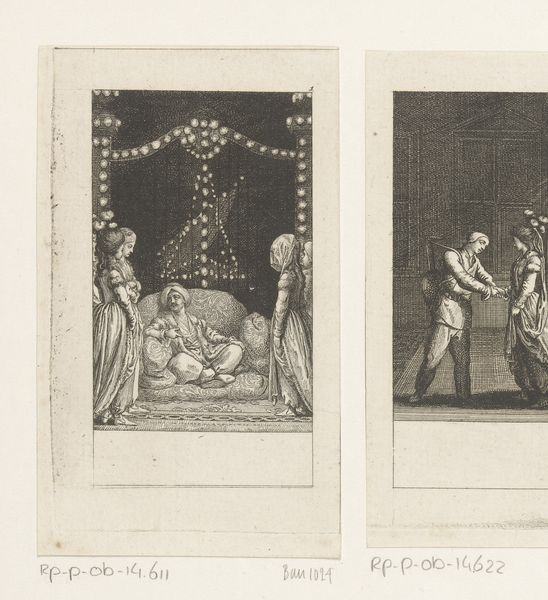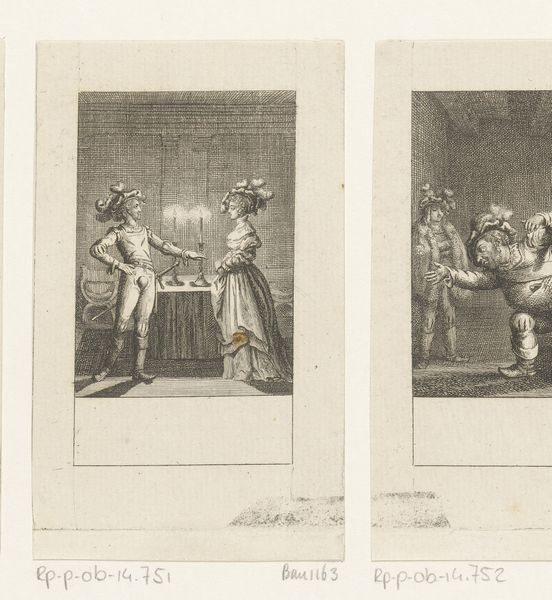
Dimensions: height 96 mm, width 63 mm
Copyright: Rijks Museum: Open Domain
Curator: Let's discuss "Knielende vrouw die de armen reikt naar een zittende man," or "Kneeling woman reaching out to a seated man" by F.B. Lorieux, dating back to 1791. It is a print, an engraving. Editor: My first impression? It’s a charged scene. All that implied drama, the tension in their reaching arms... a feeling of desperate pleading. Curator: Absolutely. The work’s composition immediately evokes theatrical melodrama. The use of line engraving creates stark contrasts that really heighten the drama of the encounter depicted, contributing to that mood so particular to the Baroque and similar genre scenes. The placement of the characters directs the viewer's eye to the central exchange of gestures and glances. Editor: Gesture is key. The woman's kneeling pose is not just submissive; it's vulnerable, her outstretched arms suggesting a plea. And look at the man. He recoils slightly. It is interesting that you note that similarity to Baroque work. You can see such influence from that era informing this piece. But it begs the question—why are these artists drawn to creating work within this narrative tradition? What symbols or societal messages were being relayed in the 18th century, so closely to that cultural art movement? Curator: That question speaks directly to the context. During the late 18th century, the power structures of the aristocracy were beginning to fray and weaken. Genre scenes became incredibly popular in prints—they offered a way to grapple with those anxieties, allowing people to engage with moral and sentimental narratives safely. Scenes like this are playing on a very public fear of status and moral decline, a didactic purpose shaping visual storytelling itself. Editor: So, it’s not just a personal drama; it’s a representation of societal tensions. You know, I see in this interaction, this very particular setup, this is a symbolic challenge to masculine authority—her prostrate form demanding attention, the almost imperceptible look on her face that feels... rebellious? The symbolism becomes a stage for a wider power play of female defiance against societal standards. The seated man's pose then underscores a certain male vulnerability too. Curator: A fascinating interpretation! Considering the historical obsession with the theater of morality, this artwork not only tells a compelling narrative but offers invaluable insights into the cultural anxieties simmering beneath the surface. It reminds us how power, emotion, and vulnerability can be performed and scrutinized within a single scene. Editor: Agreed. It’s more than just surface emotion; it's about those silent, coded struggles visualized through their interaction and preserved in print.
Comments
No comments
Be the first to comment and join the conversation on the ultimate creative platform.


